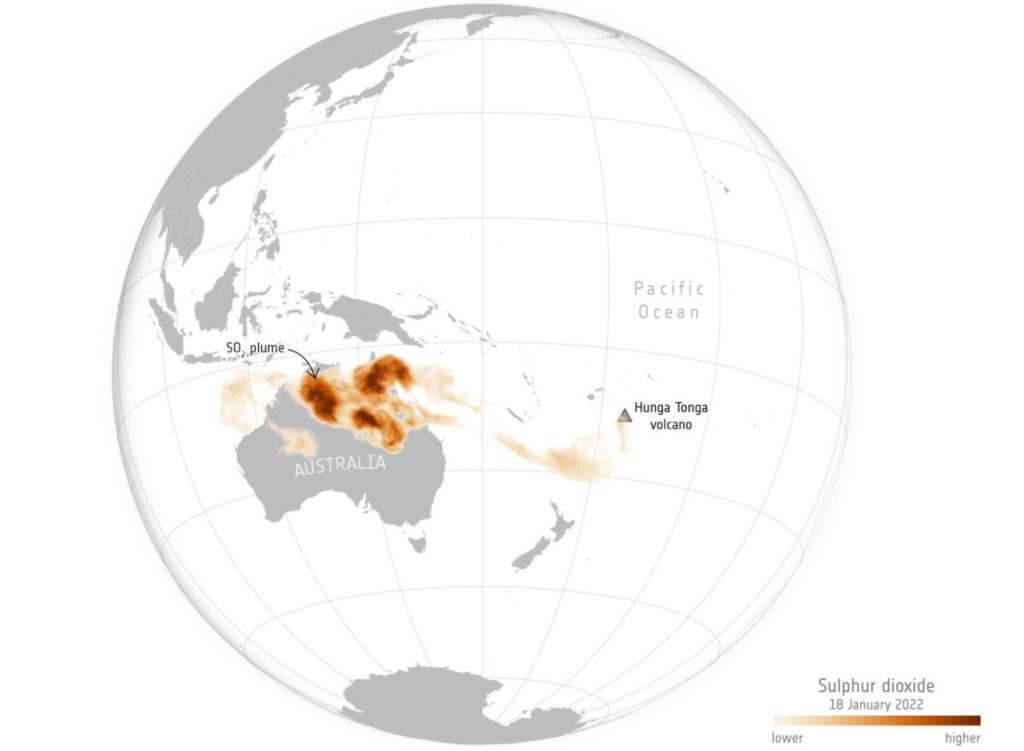
The Hunga-Tonga-Hunga-Ha’apai volcano near Tonga in the South Pacific erupted with such force on 15 January that it is thought to be the biggest eruption recorded anywhere on the planet in 30 years.
Sending tsunami waves across the Pacific, the effects of this underwater eruption were felt as far away as the United States and Japan. Sonic booms from the eruption were heard across the Pacific and as far as Alaska, more than 9000 km away and the shockwave resulted in a noticeable jump in atmospheric pressure around the world.
The image below, based on data collected on January 16 by the Cloud-Aerosol Lidar and Infrared Pathfinder Satellite Observations (CALIPSO) mission, shows material from the eruption rising to an altitude of 31 kilometers (19 miles). Other CALIPSO data collected on January 15 indicates that a small amount of ash and gas may have reached as high as 39.7 kilometers (24.7 miles).
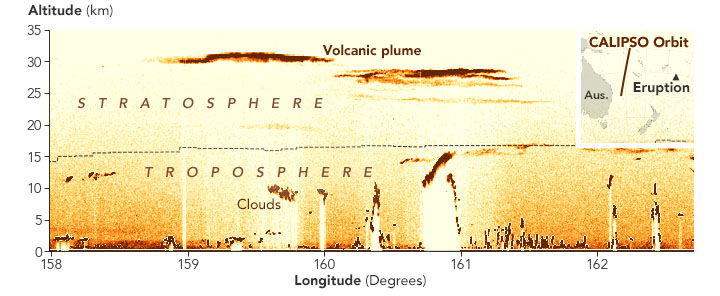
Some other calculations based on weather satellite data concluded that the plume reached even higher altitudes of up to 55km (35 miles) above the Earth’s surface. This is at the boundary of the stratosphere and mesosphere layers in the atmosphere. UNHEARD-OF ALTITUDES for a volcanic plume.
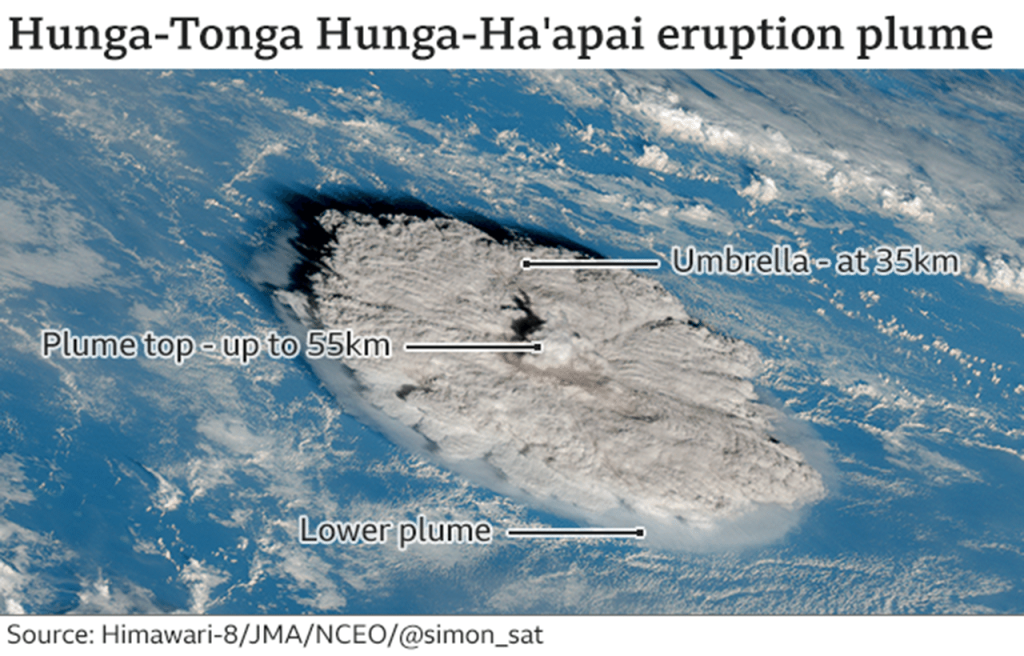
Hazardous ash has smothered the island nation of Tonga, causing an unprecedented disaster.
Early data suggests the Tonga event could have measured as high as five on the volcanic explosivity index (VEI). This would certainly make it the most powerful eruption since Pinatubo, which was classified at six on the eight-point scale.
The Philippines volcano famously dropped Earth’s average global temperature by half a degree for a couple of years. It did this by injecting 15 million tonnes of sulphur dioxide into the atmosphere. SO2 combines with water to make a haze of tiny droplets, or aerosols, that reflect incoming solar radiation.
However, scientists believe Hunga-Tonga Hunga-Ha’apai would not have the same effect.
“Pinatubo did have a noticeable effect, but the Hunga-Tonga volcano’s emissions were more than 30 times smaller at less than half a million tonnes of sulphur dioxide, so we don’t expect that to have a cooling effect, even though it made a huge bang when it went off,” he explained.
But one thing is sure! It will harm the environment for years to come:
While Tonga copes with the aftermath, the image below illustrates how sulphur dioxide from the eruption is spreading across the planet.
Using data from the Copernicus Sentinel-5P mission, the image shows the huge plume of sulphur dioxide on 18 January over Australia, more than 7000 km (4350 miles) west of the eruption.

TONGA SUNSET
While the Hunga Tonga volcano eruption ‘only’ released approximately 0.4 teragrams of sulfur dioxide into the stratosphere last weekend, it was enough for some spectacular and vivid purple sunsets across Germany, Switzerland and France.
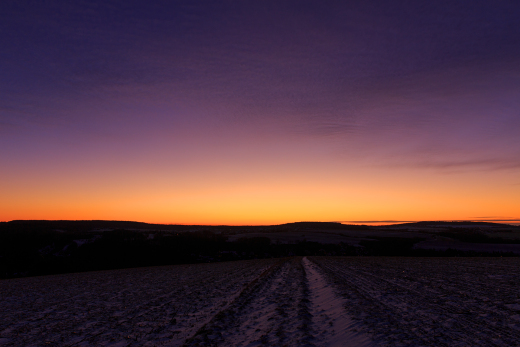
“A strong purple light appeared 26 min after sunset,” says Ulbricht. “This could be aerosols from the eruption of the Hunga Tonga-Hunga Ha’ apai volcano earlier this month.”
On Jan. 15th, the volcano hurled 400 million kilograms of sulfur dioxide into the upper atmosphere, reaching altitudes never before seen by NASA’s fleet of Earth-orbiting satellites.
As explained above, the huge cloud of sulfurous aerosols passed over Australia and has since been spreading around the world through the stratosphere.
Purple sunsets may be a sign that these aerosols have reached you. Volcanic aerosols in the stratosphere scatter blue light which, when mixed with ordinary sunset red, produces a purple hue.
Do you think the purple sky captured in Tennessee in the video below is also the result of this light phenomenon?
In addition, sky watchers should be alert for a bright yellow twilight arch, fine cloud structures in the arch, and long purple rays. These are all potential signs of a “Tonga sunset.
So now that you know it, when the sun goes down tonight, take a look at the fading sky. If the twilight turns purple, you might have spotted a “Tonga sunset.” [SpaceWeather, ESA, NEO, BBC]
Always be prepared and ready to act! When cellular networks go down & internet access fails, Galileyo will keep you informed, via the global satellite infrastructure, guaranteed.
Now subscribe to this blog to get more amazing news curated just for you right in your inbox on a daily basis (here an example of our new newsletter).
You can also follow us on Facebook and/ or Twitter. And, by the way you can also make a donation through Paypal. Thank you!
You should really subscribe to QFiles. You will get very interesting information about strange events around the world.



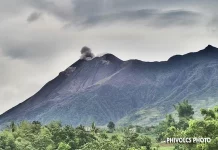
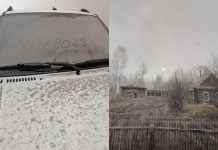









Fear Porn, What if it was a plume of H2S (Hydrogen Sulfide) (11 PPM and you are dead) instead of SO2 which will break down into H2SO4 and drop harmlessly into the ocean or cause a slight uptick of Acid Rain which has been going on for Centuries???
Trust the Science…LOL
Okay, all of the other volcanos erupting across the world and this one produced something more than what has already been released into the atmosphere? This is more fake news they are trying to spoon feed up. I too would like to have a geiger counter under that cloud.
There is no way that plume got into the Northern Hemisphere that fast.
Look at the picture. It is over Australia (1-18). Mixing between N/S hemispheres happens slowly.
Something tells me there’s more than just sulfur dioxide in that plume… Hint: it makes you glow in the dark.
Are you saying that they blew up a nuclear weapon and hid it as a volcanic explosion?
The old lady, Blind Mystic predicted this way back when! For 2022 year along with other things